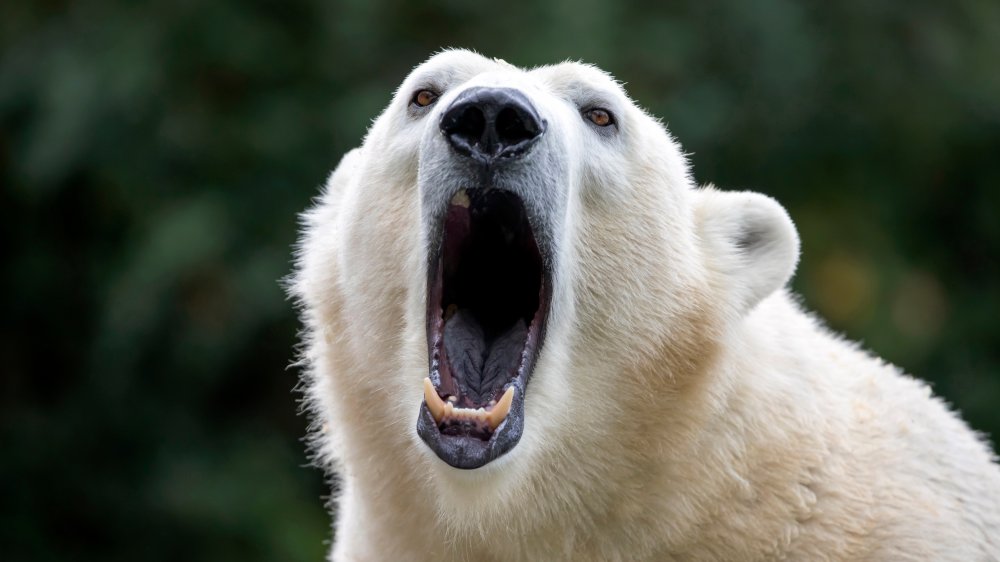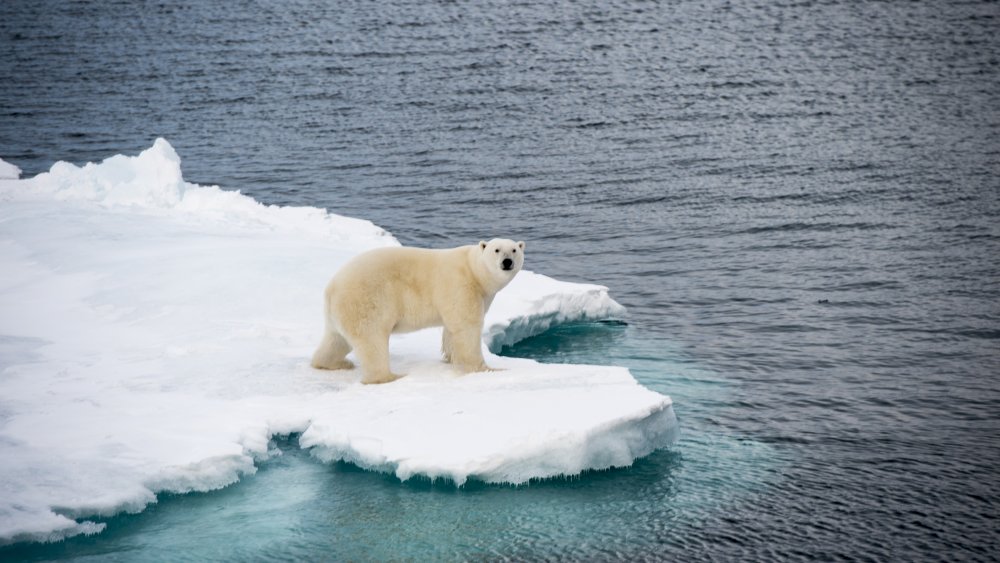The Real Reasons Polar Bears Are Endangered
Fun fact: the World Wildlife Fund refers to polar bears as marine mammals — you know, like whales and orcas and dolphins – because they spend so much of their lives on the sea ice of the Arctic Ocean.
And that, campers, is the rub: the disappearance of that ice because of climate change means polar bears have an increasingly shrinking habitat. The creatures are terrific swimmers — the WWF calls them "talented," which brings to mind Michael Phelps and, for those who arrived late, Esther Williams and Mark Spitz — with water-repellant coats and layers of body fat (which, in this case, is a good thing).
But not, like, all the time.
Sea ice is disappearing, and so are polar bears
A polar bear is nothing to sneeze at (unless, of course, you're allergic), weighing well over a half-ton and up to nine feet long (or high, depending). They spend about half their time hunting. According to studies quoted by National Geographic, the bears consume upwards of 12,000 calories a day. That's, like, a boatload of hot fudge. Except they mostly eat seals. Because of the fat content. And who wouldn't?
The bears' most successful hunting technique is to wait at a seal air hole in the arctic ice. When the seal comes up for a breath the bear smacks it on the head with both paws, then pulls it up and voilà, sealsnacks. As well as salad, entree, and dessert course. But the disappearance of the ice means no ice holes, and no seals. Despite their talents, swimming after the seals is a much more difficult proposition for a bear and is usually an act of desperation.
Loss of the ice means loss of hunting grounds, and loss of hunting grounds means loss of habitat, and now, loss of the bears themselves. They are literally starving to death.
National Geographic further reports that polar bear populations are ranked as "endangered" in the United States. Globally, the decreasing population is listed as "vulnerable" by the WWF. The National Wildlife Federation calls the bears "threatened."

